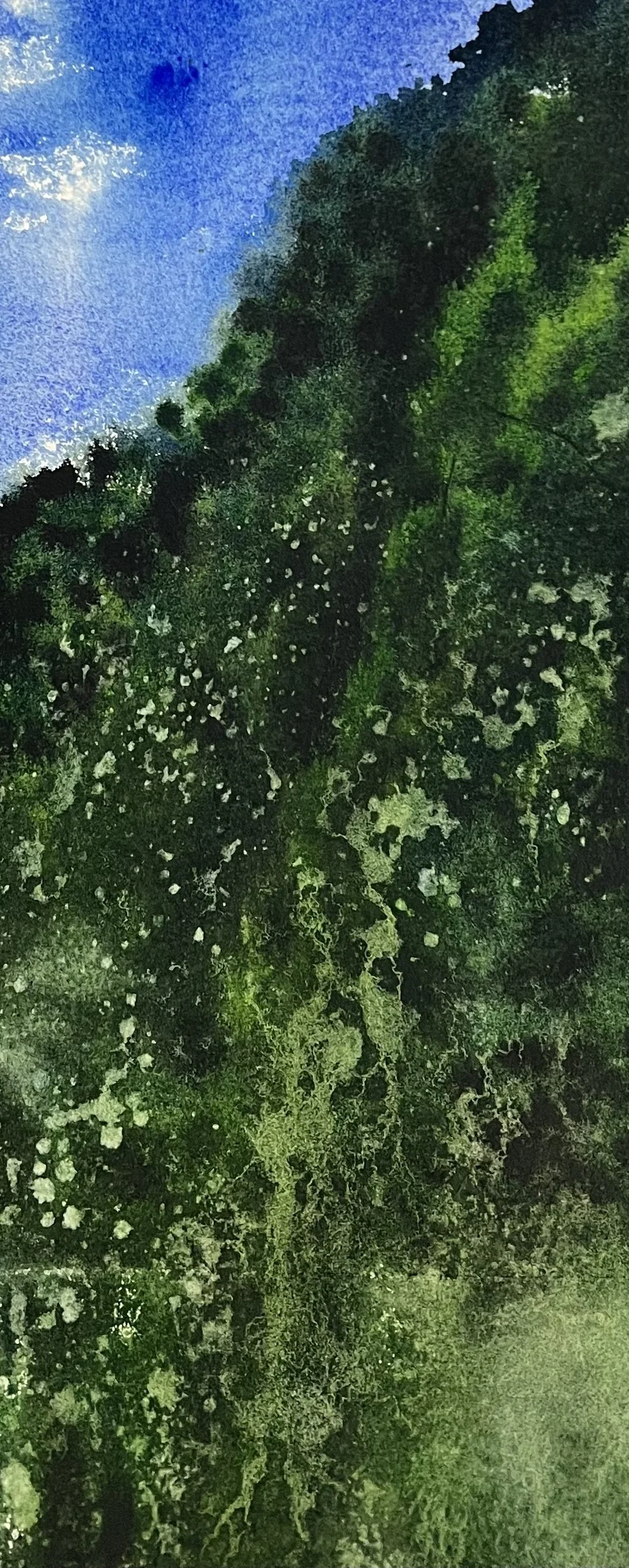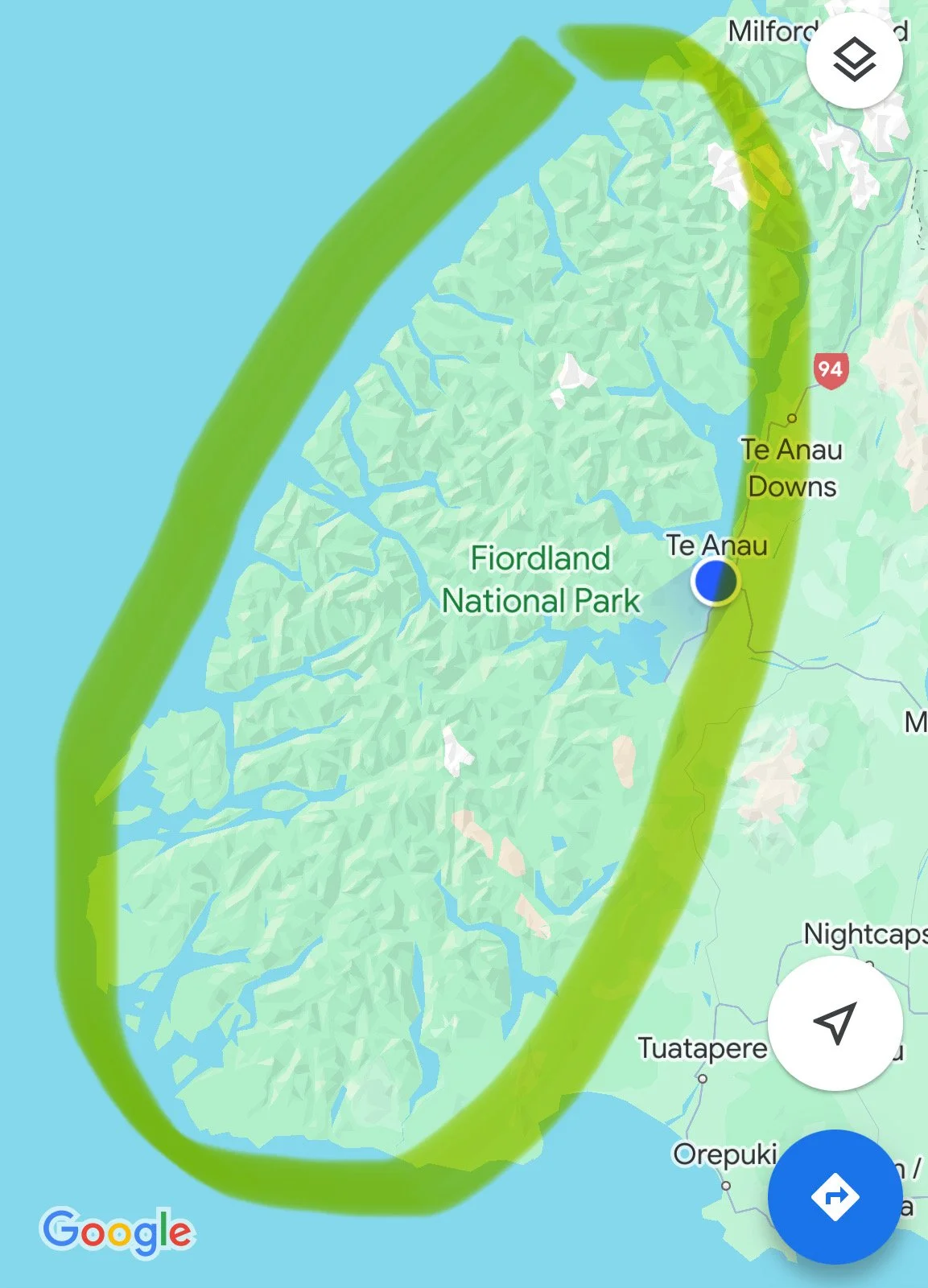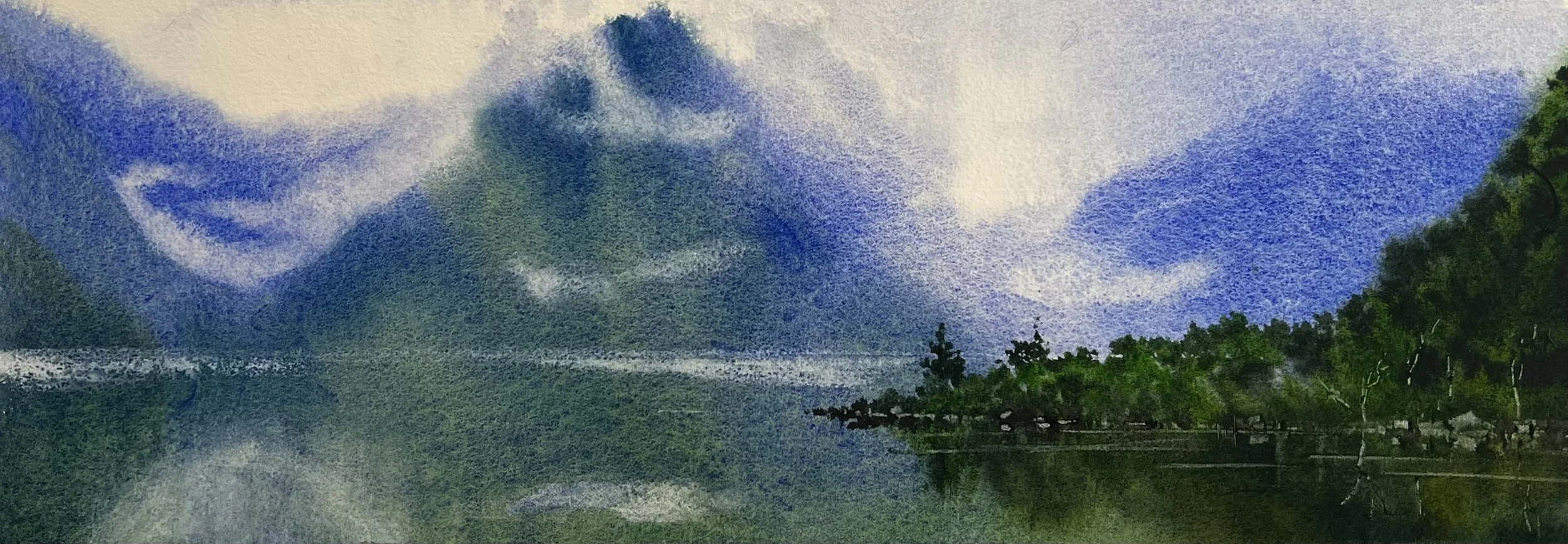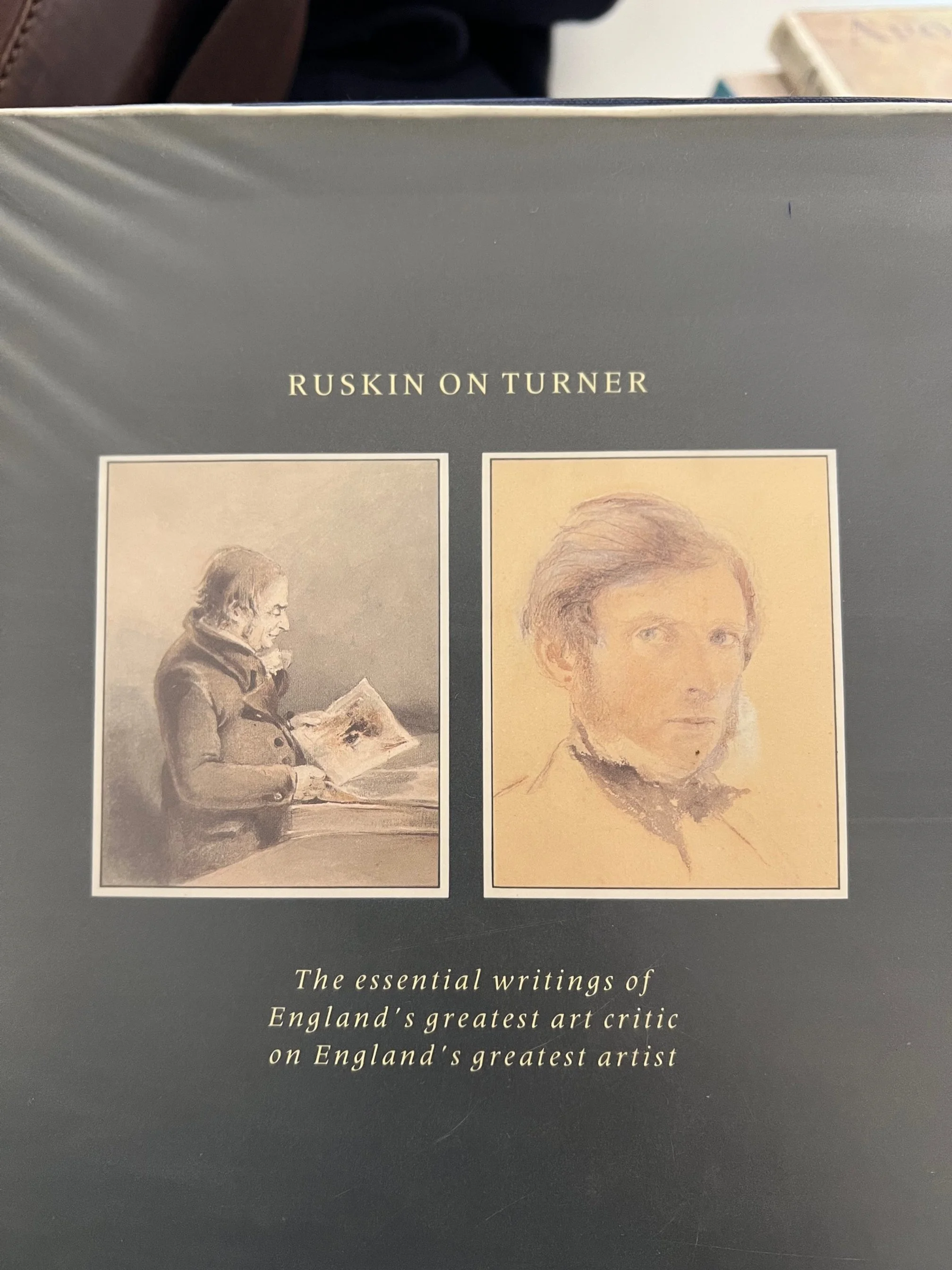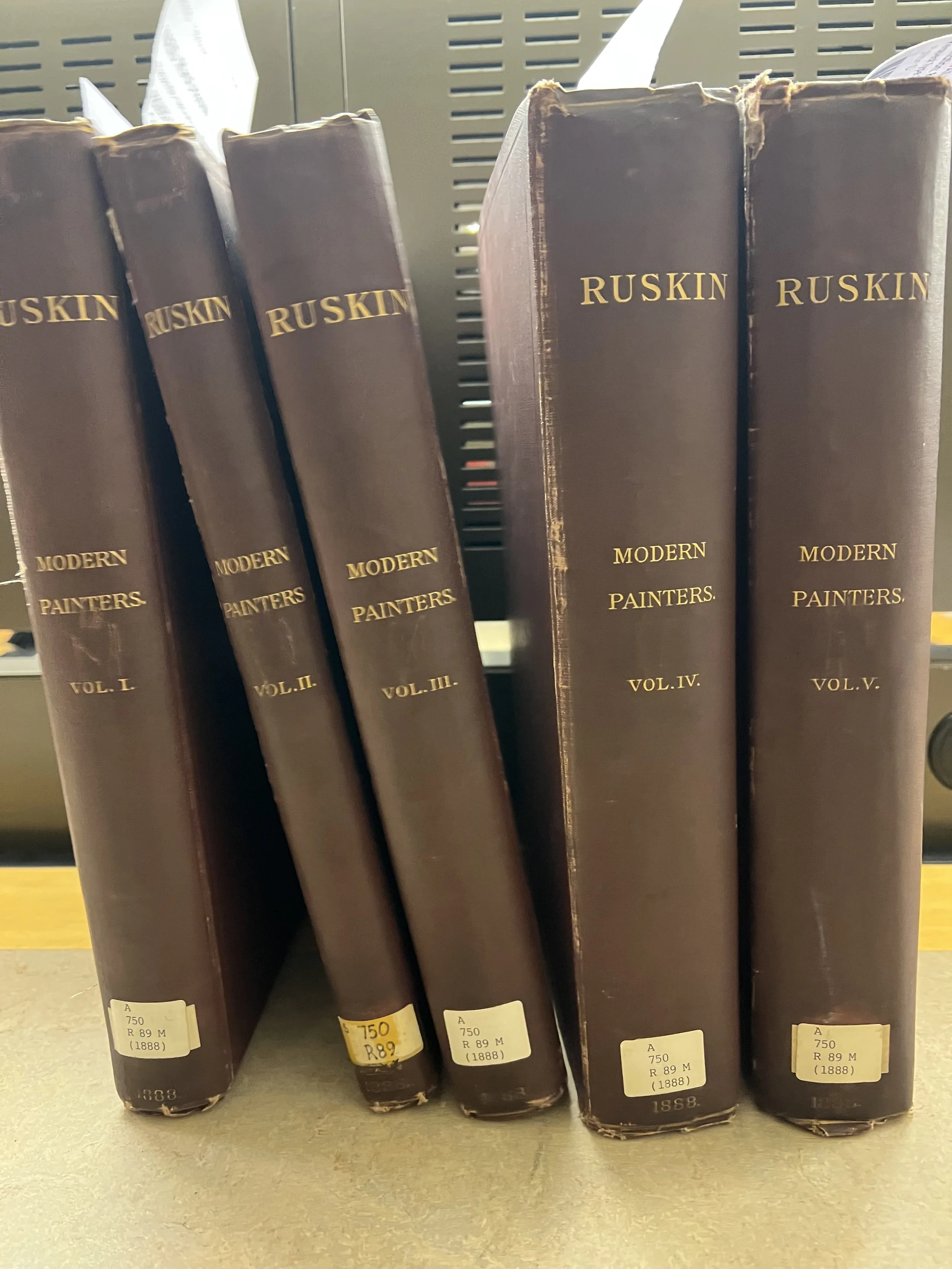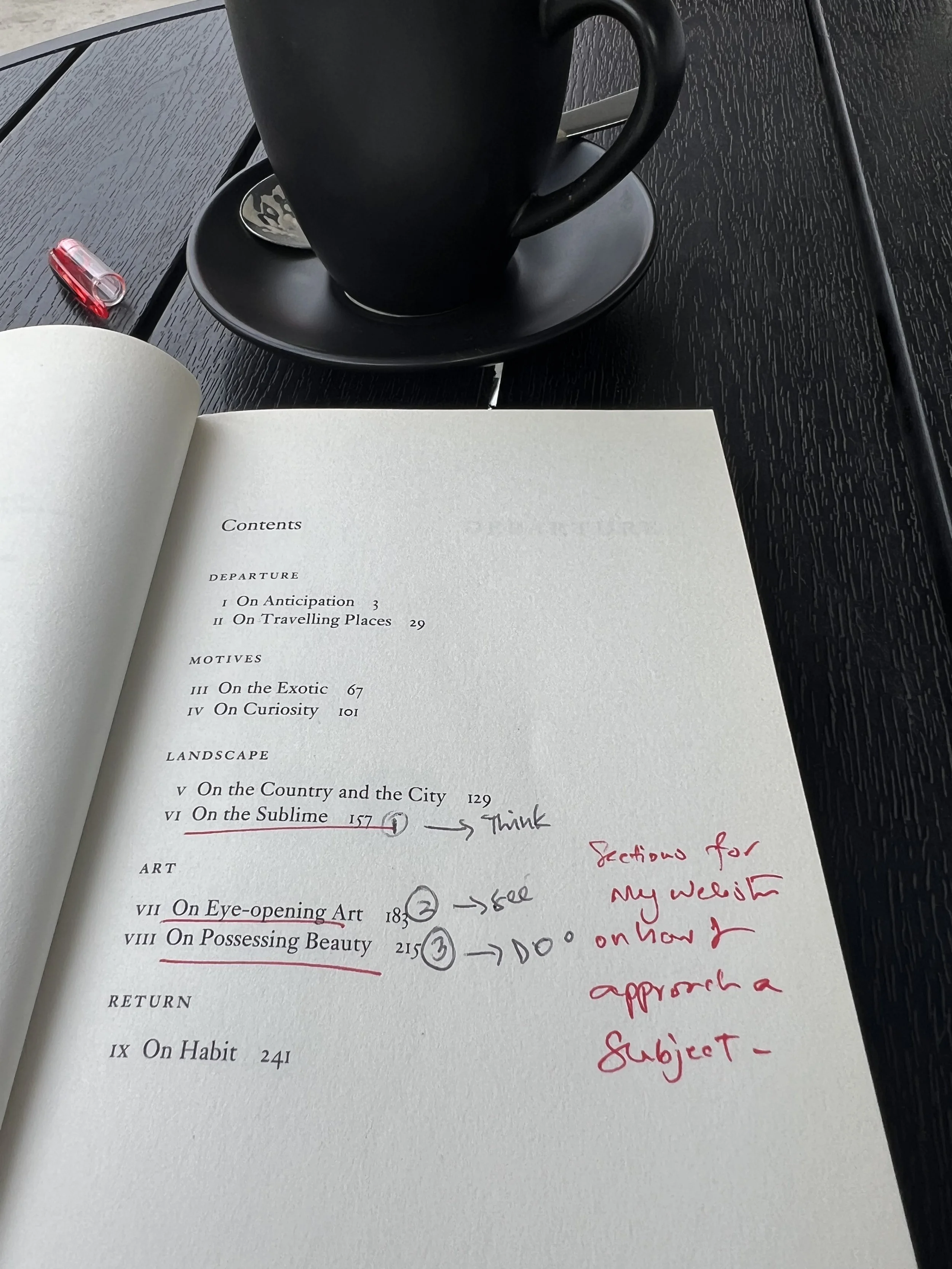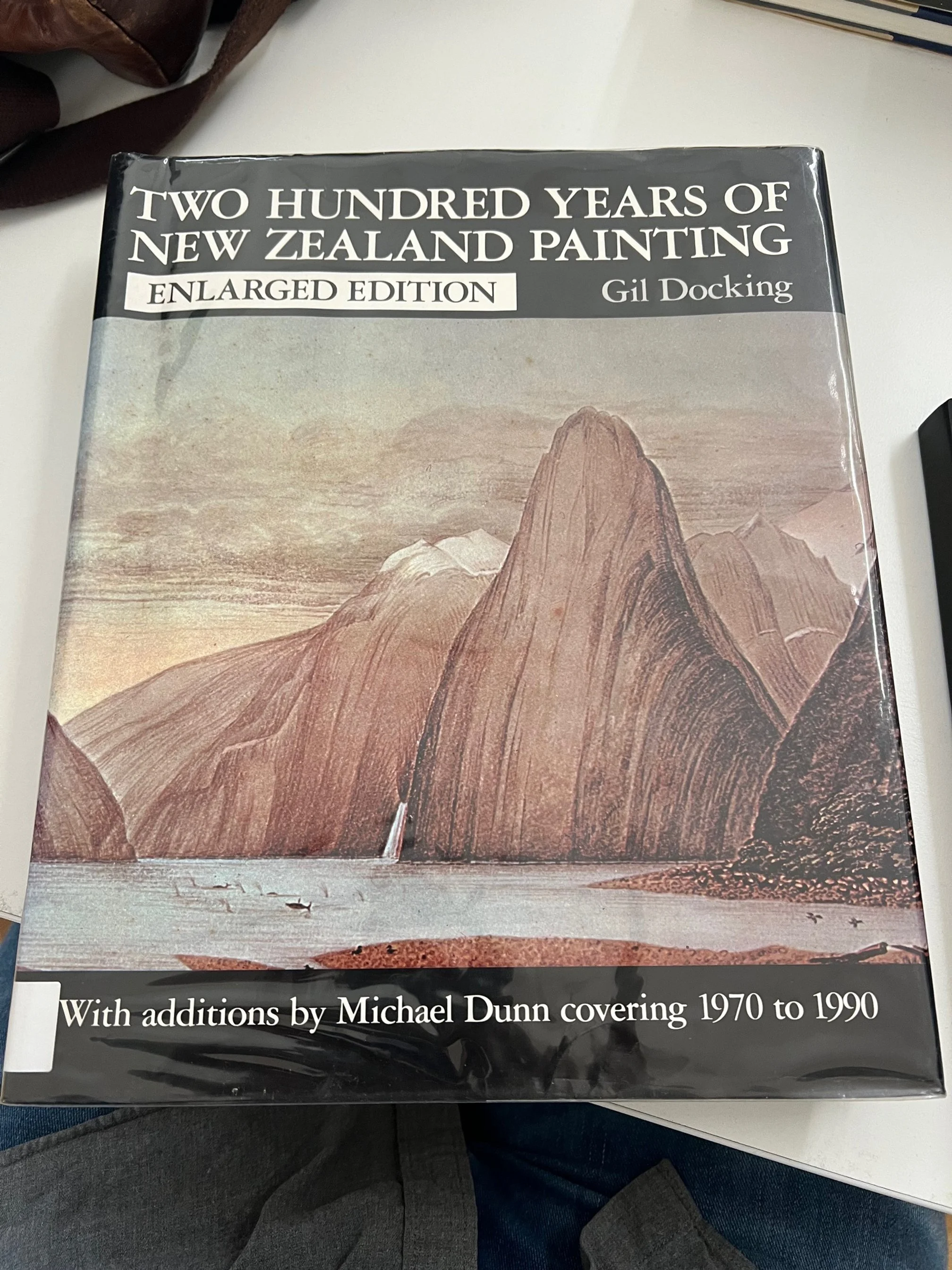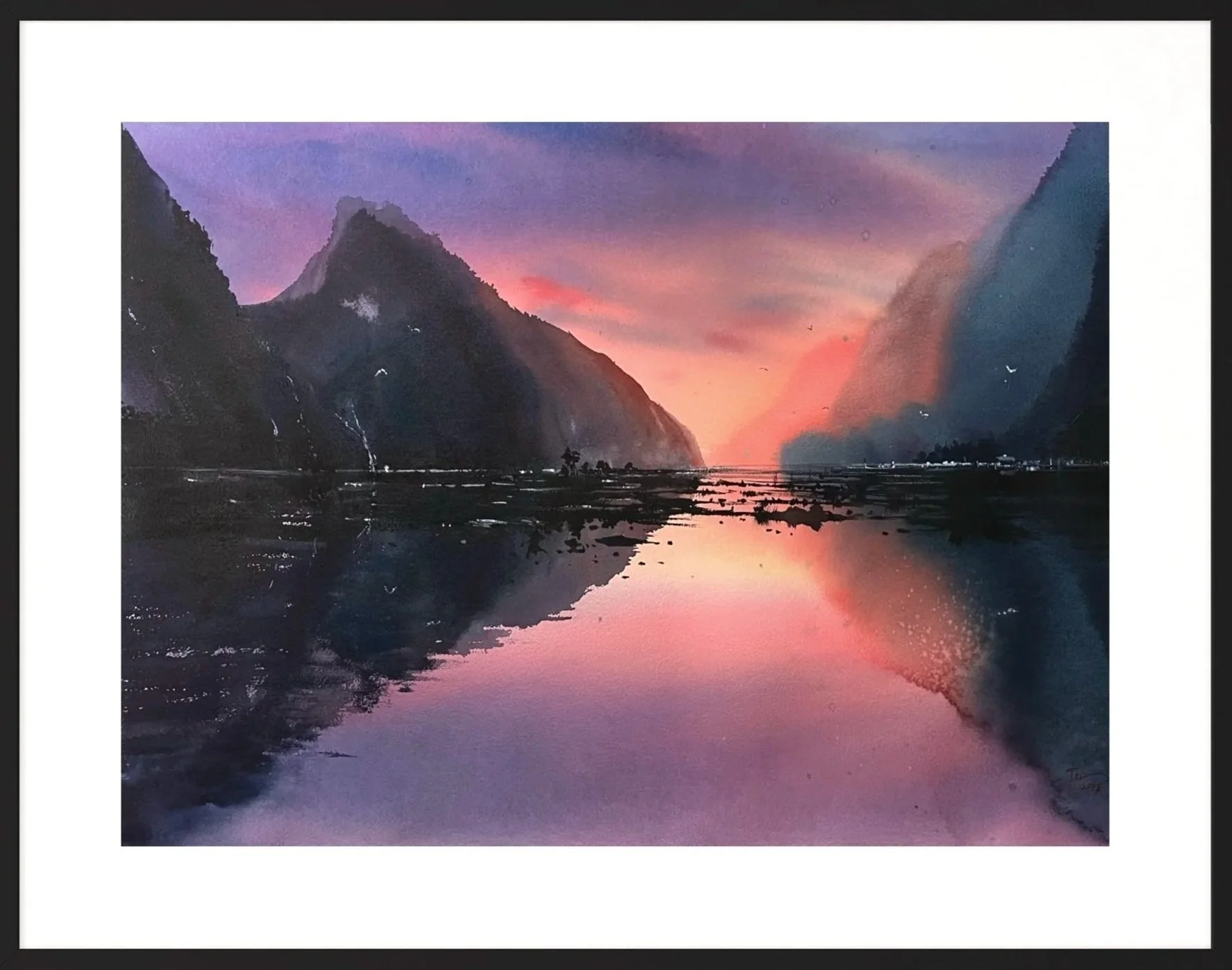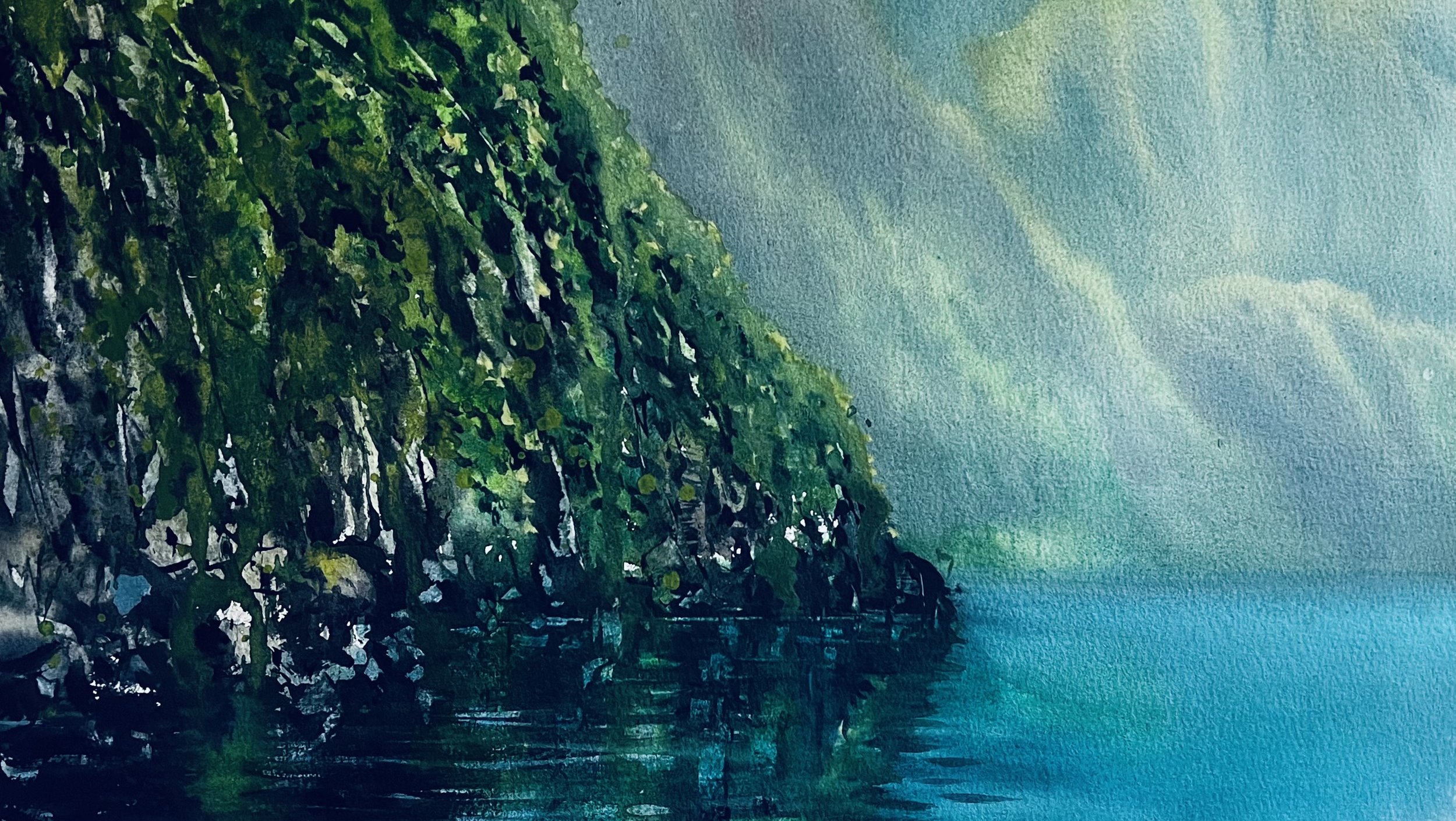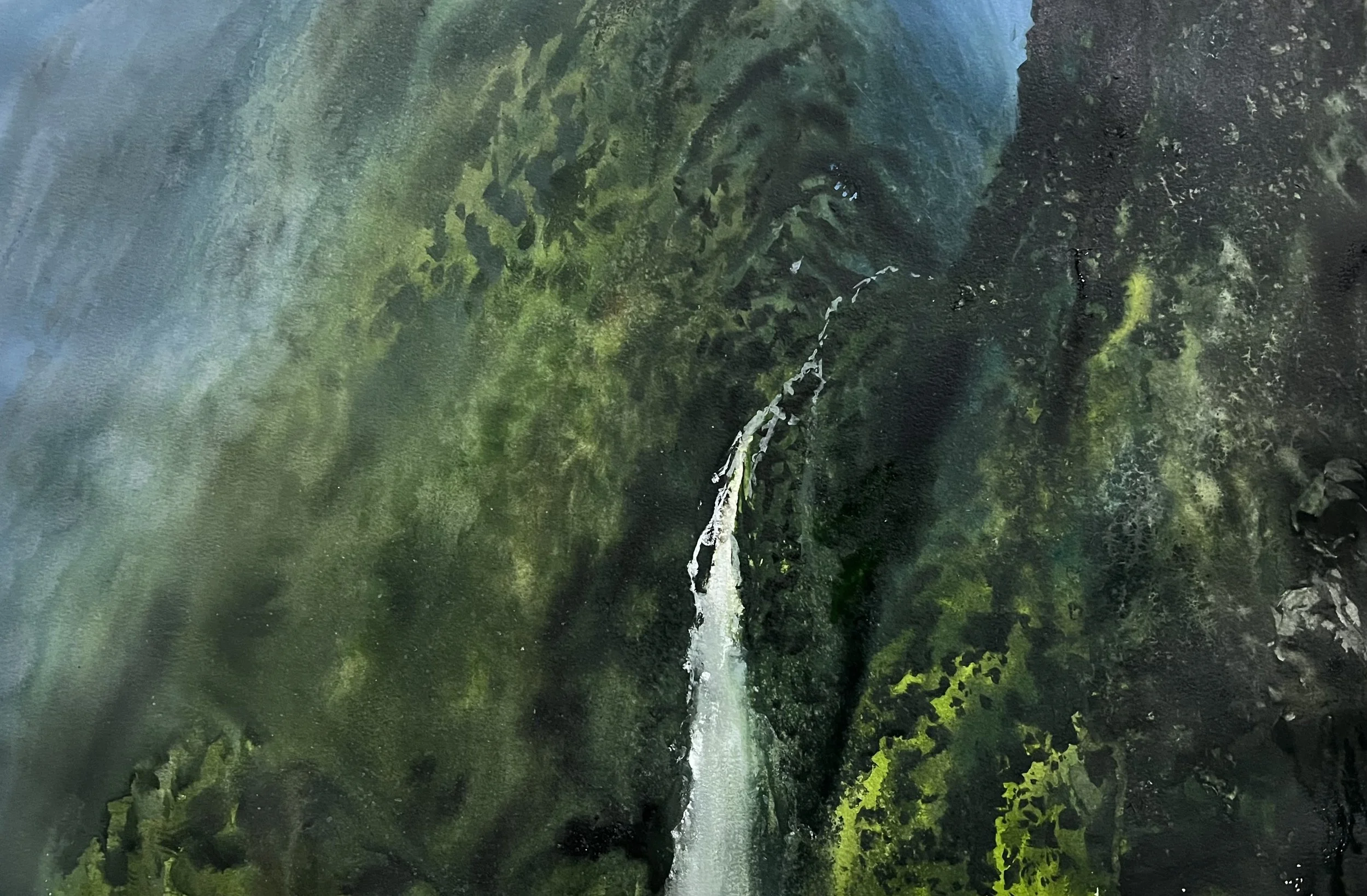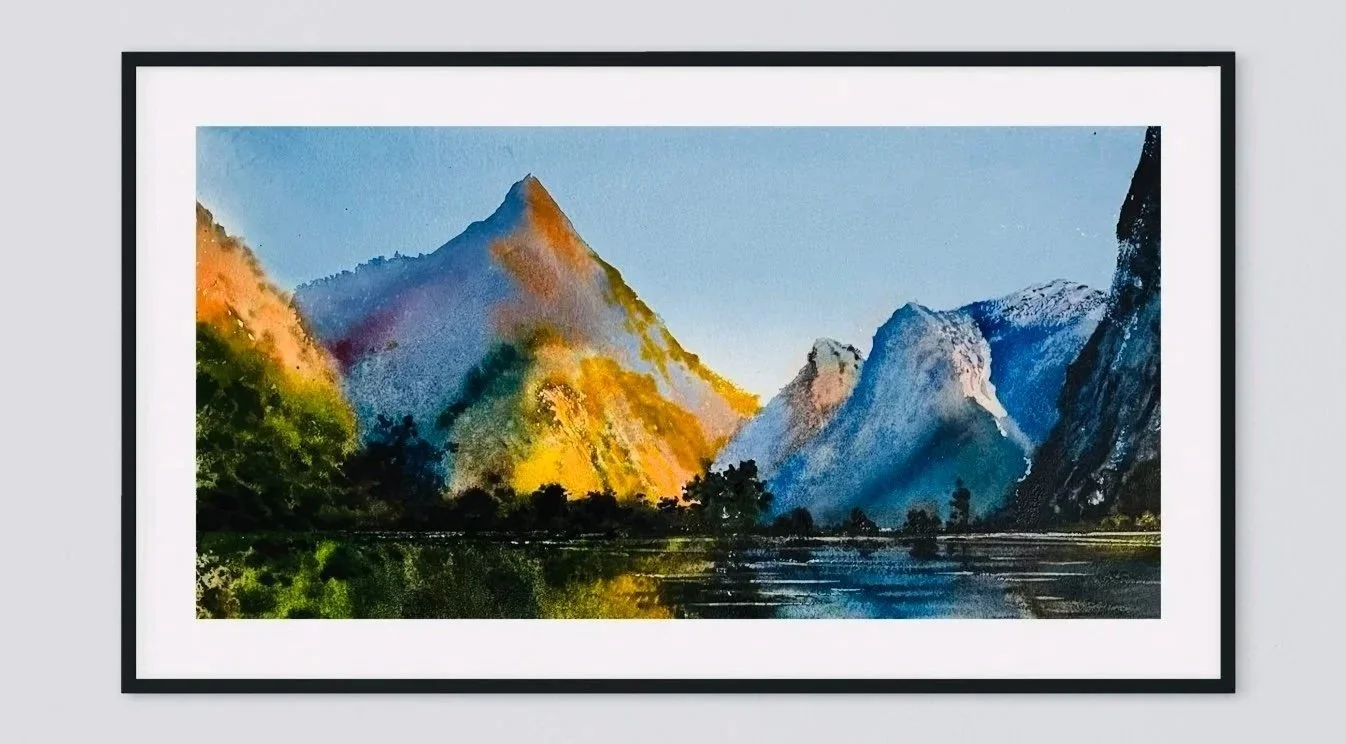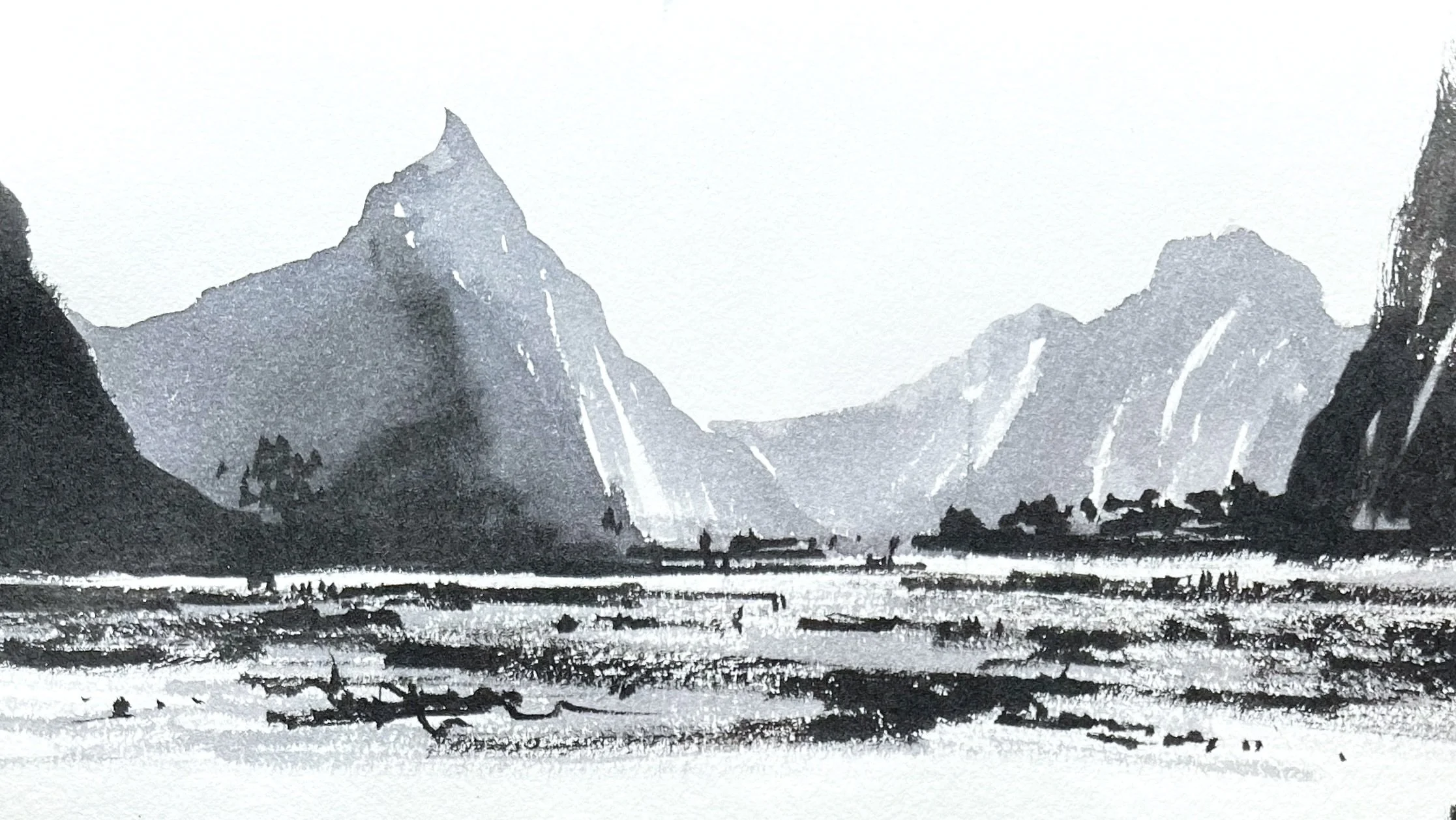
Silent Sublime
This work is inspired by my many pilgrimages to Fiordland over the years. Sketches, colour studies, plein air paintings and studio pieces - all attempts to hold on to that deep silence on paper and in memory, as a reminder and an invitation at the same time.
Silent Sublime, 75x55 cm, Watercolour on paper
Fiordland demands nothing. It accepts presence and deep attention as an offering.
“The greatest thing a human soul ever does in this world is to see something and tell what it saw in a plain way. Hundreds of people can talk for one who can think, but thousands can think for one who can see. To see clearly is poetry, prophecy and religion, all in one.”
— John Ruskin, Modern Painters 1856
Fiordland -> Plein air -> Fiordland -> Memory -> Studio -> Fiordland
I often work plein air, painting directly on the foreshore or the boat, then rework a larger version back in my studio. The plein air piece carries the immediacy of being there, the wind, the shifting light, the sound of waterfalls.
Why immersion in landscape
Immersion in a single subject, returning again and again to the same fiord, the same rock face, the same waterfall is not monotony. It is quite the opposite, they call it jamais vu - the opposite of déjà vu. Instead of the new feeling familiar, it’s when the familiar suddenly feels new as if seen for the very first time.
Jean-Paul Sartre captured this in his novel Nausea, when his character looking at the roots of a chestnut tree, is seized by an estrangement, the ordinary is stripped bare and seen anew. What was background becoming foreground; what was known is seen for the first time, as it actually is.
This is why immersion matters. Cézanne painted Mont Sainte-Victoire over sixty times because the mountain never stopped becoming unfamiliar. Turner returned endlessly to sea and storm, to light on water, because each attempt was a new encounter, not a repetition. Wordsworth described “spots of time”, moments of return in which perception deepens into meaning.
That is exactly what happens when I paint. At first, a peak or a fiord seems familiar but then, after repeated attempts and many experiments, it reveals itself again with a kind of novelty. Not just “a mountain” or “a waterfall,” but the essential mountain-ness and waterfall-ness of Fiordland.
Immersion in one place, one subject, isn’t about mastery. It’s about letting the landscape become unfamiliar enough that we can truly see it. Watercolour, with its breathtaking allure yet mercurial nature helps me keep that strangeness alive. This has happened with me before when i was painting the barrier reef for a year, it led to visual language which was dictated by the subject and not by the artist.
These attempts are not an exercise in repetition, but attempts at creating a first encounter, again.
“Beauty is the harvest of presence.”
- David Whyte
A dominant impulse on encountering beauty is the desire to hold on to it: to possess it in some way and give it weight in our lives.
There is an urge to say, ‘I was here, I saw this and it mattered to me.’
- Alain de Botton




The Realistic Painter
‘Completely true to nature!’- what a lie:
How could nature ever be constrained into a picture?
The smallest bit of nature is infinite!
And so he paints what he likes about it.
And what does he like?
He likes what he can paint!
- Nietzsche, mockingly.
Early impressions – sketches & value studies
When I first arrive, I start with small, loose sketches. Not to make “finished” art, but to attune myself to noticing and really seeing. The goal is to get every familiar association out of my system: the classic postcard views, the easy compositions. These sketches are my warm-up laps, the visual equivalent of taking a deep breath and getting all the old conditioning out. Nothing technical yet, just getting used to the idea that i am now dealing with a new subject.
The physical act of Seeing
Ruskin said that drawing is above all an act of seeing. The first days in a landscape are for clearing your vision. Sketching until the obvious is gone, and the place begins to speak back. Only then do the real paintings begin.
Before colour, I map the light in black and white. In Fiordland, the play of shadow and mist shifts minute by minute, and I use quick tonal studies to find where the drama lies.
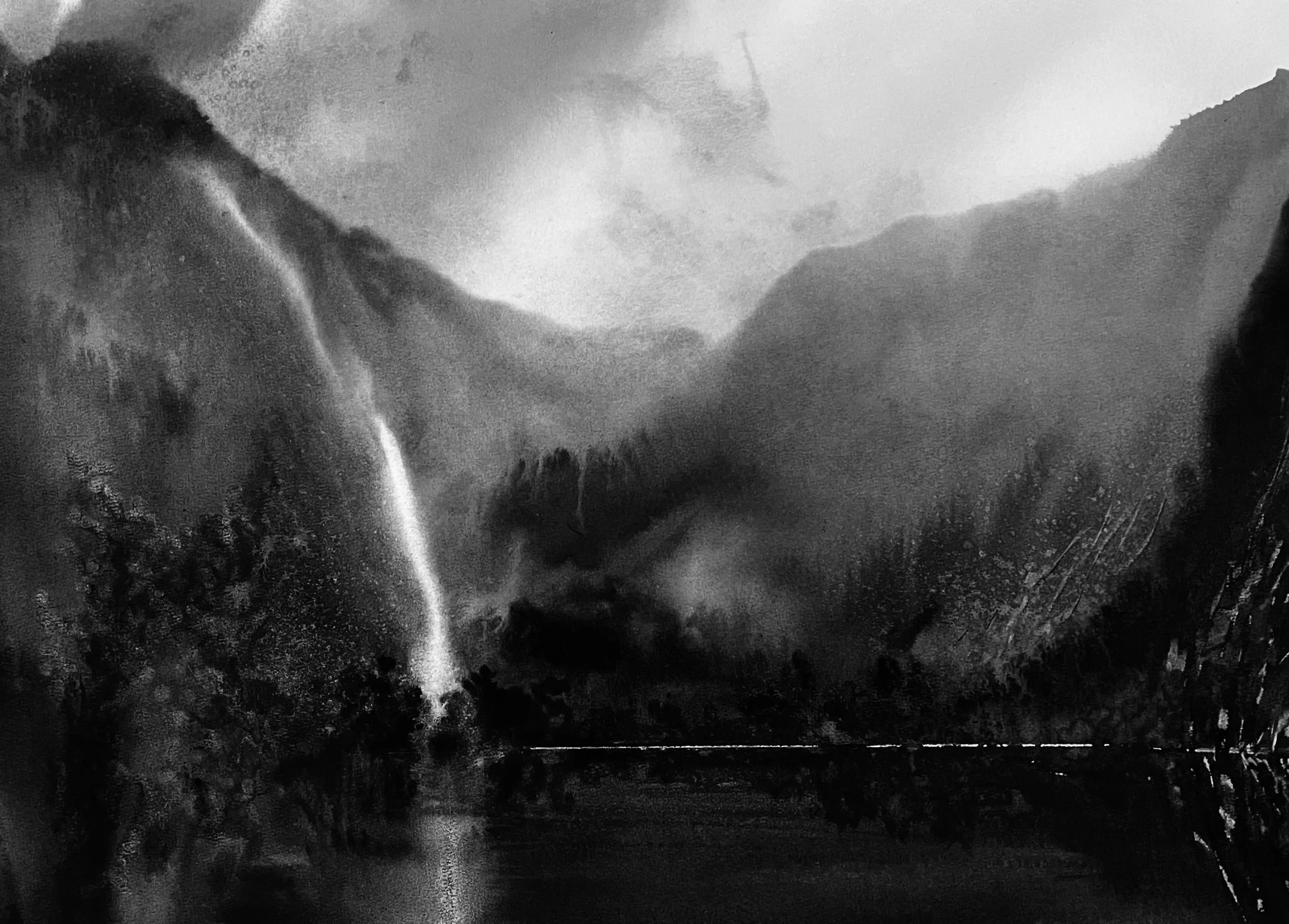
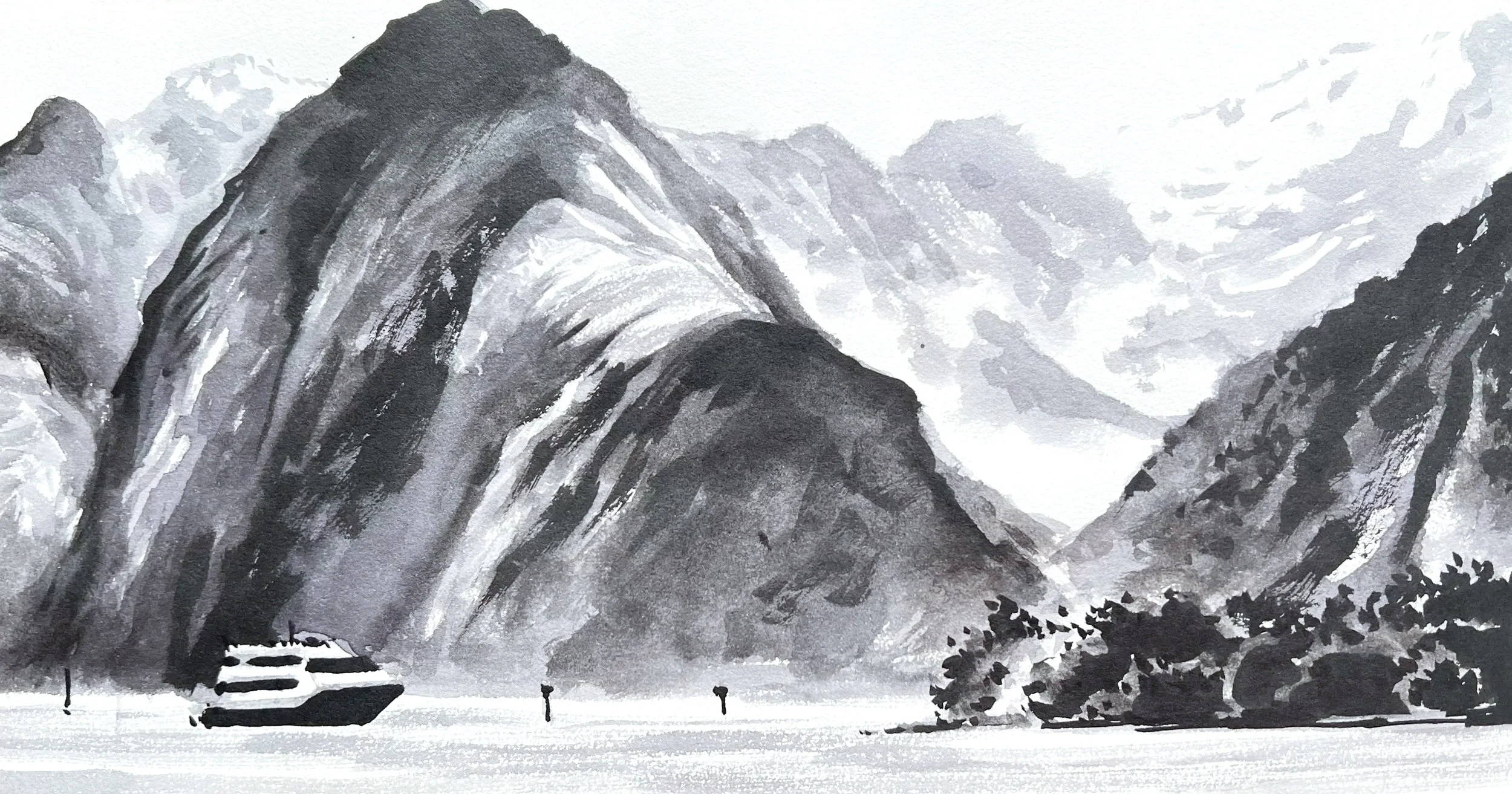
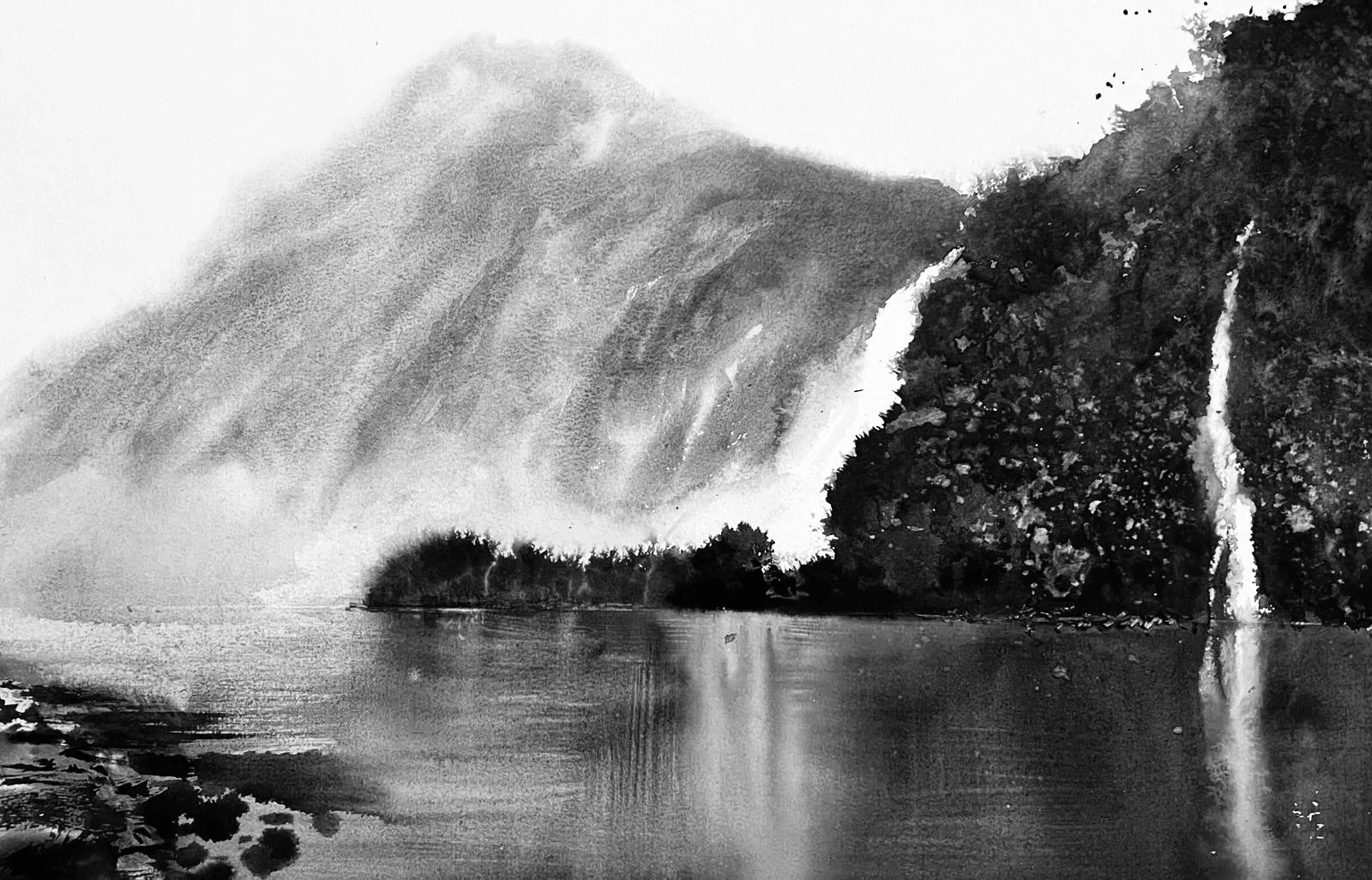
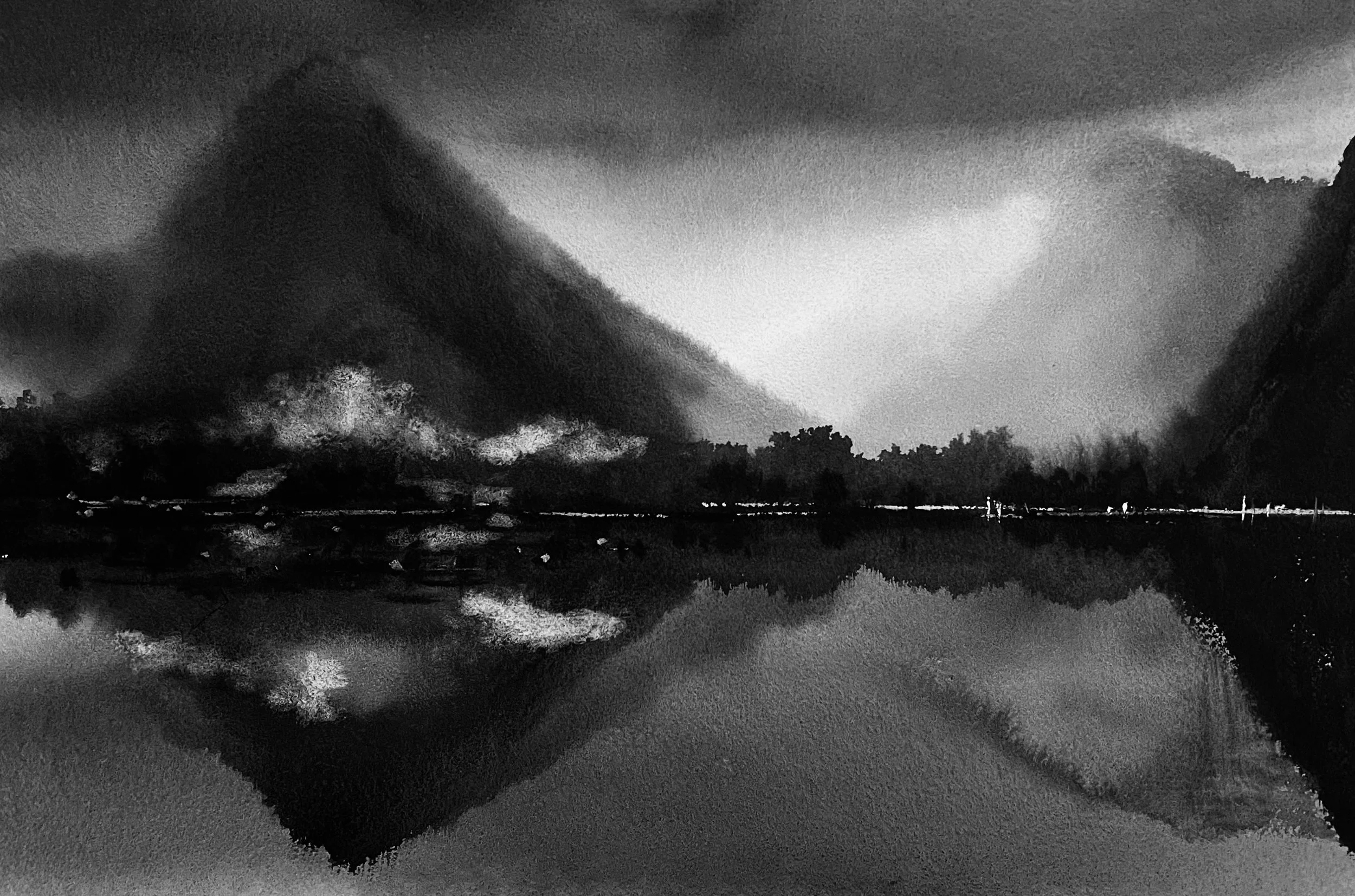
“The most effective way of pursuing a conscious understanding of beauty is by attempting to describe beautiful places through art, writing or drawing them, irrespective of whether we happen to have any talent for doing so.”
— John Ruskin, Artist & Art Critic
Silent. Sublime.
The Māori name for Milford Sound, Piopiotahi “a single piopio” comes from the story of a lone bird who flew here in mourning after the death of Māui. For me, this silence is not emptiness, but a presence, the kind that understands loss and holds it gently. The “sublime,” as 18th century romantic poets and painters described it, is the awe stirred by nature’s grandeur, beauty so immense it humbles and enlarges you at once. Fiordland’s silence holds both: the quiet grief of the Piopiotahi and the awe-inspiring sublime. Together, they create a rare emotional depth that I’ve never encountered anywhere else.
Over the years, visiting Fiordland has become my pilgrimage. I’ve returned again and again, sometimes every year, sometimes more. I walk its forests, watch light shift over the peaks at twilight and every single time when I’ve gone back home, I’ve carried something back that changed me: a decision, a direction, a stillness, a way of seeing that shaped the life I now live.
David Whyte talks about why we go back to the same places again and again, and this is the best answer I’ve heard so far. Yet when I heard it, I felt that I’ve always known it. In a way, each visit is a meeting with an earlier version of myself, the one who stood here years ago and had the courage and empathy to make a choice that became the ancestor of my present happiness. I come back to thank that self, and to ask a question that never fails to rise in this place: What can I do today that will make me the ancestor of my future happiness?
“I love…with almost a visionary fondness and because I have found benevolence and quietness growing within me as that fondness has increased, therefore I should wish to be the means of implanting it in others.”
- Samuel Taylor Coleridge
My hope is that by sharing my art and process, you will be reminded as I have been, that there are places in the world, sometimes right next door - that do not just give us refuge but restore us to ourselves.
Rehann Vazid, Sep 2025
Artist Journal
Fiordland’s dawn & dusk light is elusive. I’ve been running controlled experiments with granulating pigments, layering transparent washes and dropping wet colors into wet to recreate that mineral yet hazy glow. Some of these tests succeed; others fail but every failure is a clue that illuminates the next step.




